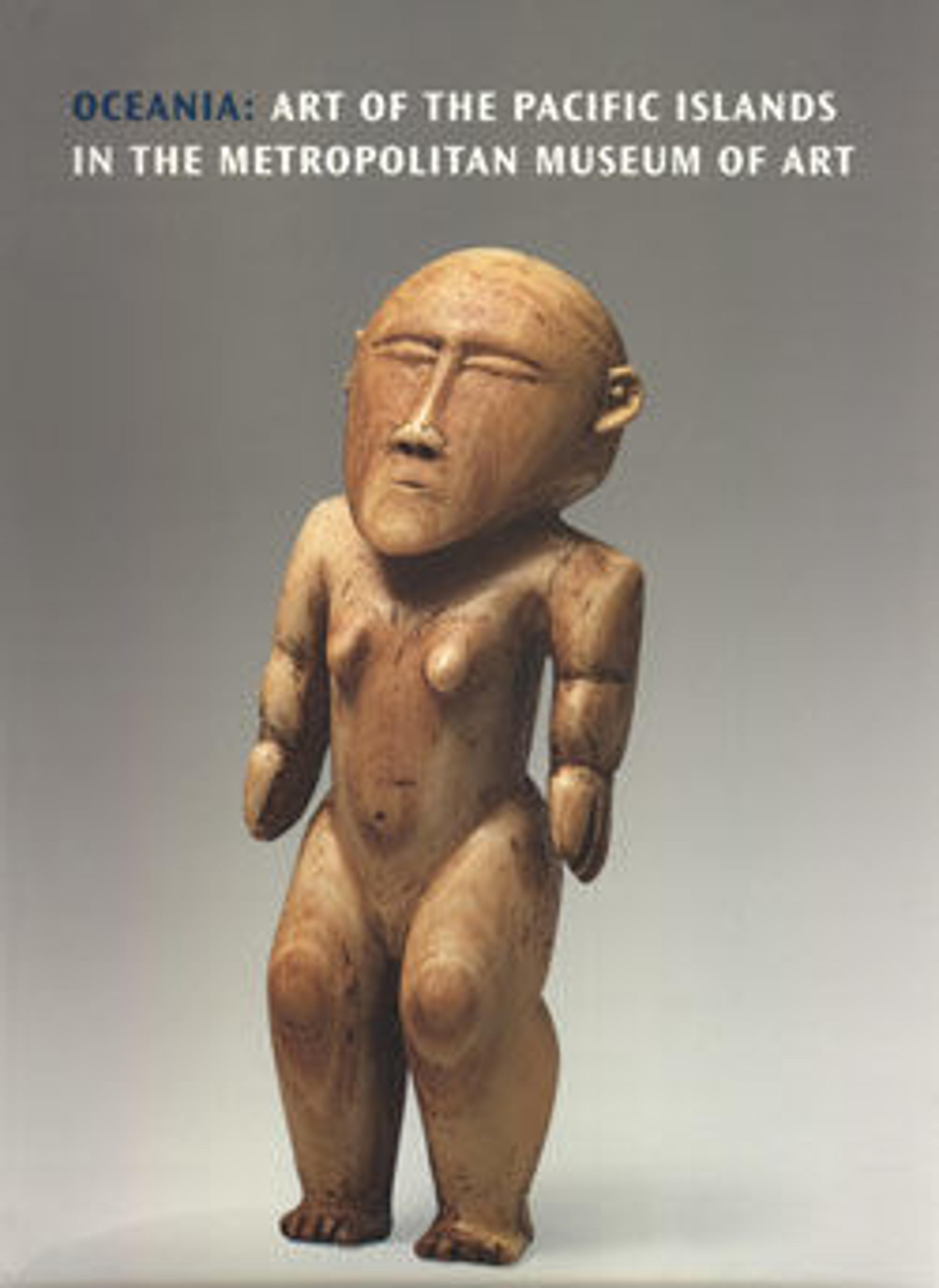Helmet Mask (Temes Mbalmbal)
This dramatic helmet mask comes from southern Malakula Island in Vanuatu (formerly the New Hebrides) east of Australia. Many Vanuatu peoples have complex men's secret societies, which involve a series of ritual "grades" through which individuals pass, by means of initiation rites, festivals, and pig sacrifices, in order to achieve increasing religious and social status.
The two most prominent grade societies in southern Malakula are Nimangki and Nalawan. Grade rituals in each of these societies involve the creation of brightly painted figures and masks depicting powerful spirits and other supernatural beings. This mask represents the female cannibal giant Nevinbumbaan, whose son, Ambat Malondr, sits on her shoulders. Nevinbumbaan is credited with the creation of the men's Nimangki society; this mask is made and worn at various stages in the ceremonial cycle.
The two most prominent grade societies in southern Malakula are Nimangki and Nalawan. Grade rituals in each of these societies involve the creation of brightly painted figures and masks depicting powerful spirits and other supernatural beings. This mask represents the female cannibal giant Nevinbumbaan, whose son, Ambat Malondr, sits on her shoulders. Nevinbumbaan is credited with the creation of the men's Nimangki society; this mask is made and worn at various stages in the ceremonial cycle.
Artwork Details
- Title: Helmet Mask (Temes Mbalmbal)
- Date: mid-20th century
- Geography: Vanuatu, Southwest Malakula
- Culture: Southwest Malakula
- Medium: Wood, vegetable fiber, pig tusks, glass, plastic/rubber(?), paint
- Dimensions: H. 28 1/2 in. × W. 17 in. × D. 18 in. (72.4 × 43.2 × 45.7 cm)
- Classification: Wood-Sculpture
- Credit Line: The Michael C. Rockefeller Memorial Collection, Bequest of Nelson A. Rockefeller, 1979
- Object Number: 1979.206.1697
- Curatorial Department: The Michael C. Rockefeller Wing
More Artwork
Research Resources
The Met provides unparalleled resources for research and welcomes an international community of students and scholars. The Met's Open Access API is where creators and researchers can connect to the The Met collection. Open Access data and public domain images are available for unrestricted commercial and noncommercial use without permission or fee.
To request images under copyright and other restrictions, please use this Image Request form.
Feedback
We continue to research and examine historical and cultural context for objects in The Met collection. If you have comments or questions about this object record, please contact us using the form below. The Museum looks forward to receiving your comments.
